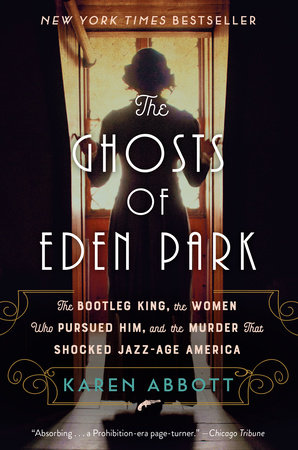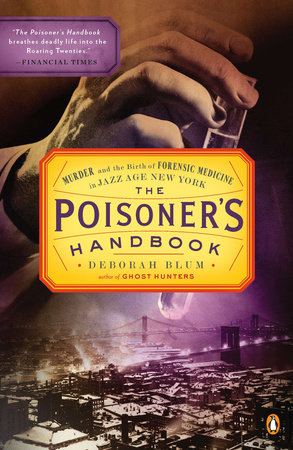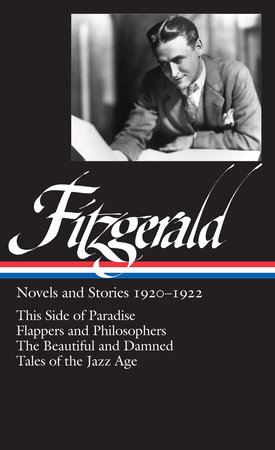There's a Book for That: The Jazz Age
 “We couldn’t go on indefinitely being swept off our feet.” ―
“We couldn’t go on indefinitely being swept off our feet.” ―
We cannot let April close without celebrating Jazz Appreciation Month! After all, our lives are full of improvisation lately and music is nothing if not a healing art. The Smithsonian launched Jazz Appreciation Month (JAM) in 2001 to pay tribute to jazz both as a historic and living American art form. Our riff on the theme is based on current nostalgia for the roaring twenties as people compare what it might be like once we safely resume our normal (or close to normal) social lives. So we invite you to re-enter the Jazz Age through the following nonfiction titles and classic novels:

“Gatsby-era noir at its best.”—Erik Larson
In the early days of Prohibition, a German immigrant named George Remus quits practicing law and starts trafficking whiskey. Within two years he’s a multi-millionaire. By the summer of 1921, Remus owns 35 percent of all the liquor in the United States. Pioneering prosecutor Mabel Walker Willebrandt is determined to bring him down. Combining deep historical research with novelistic flair, The Ghosts of Eden Park is the unforgettable, stranger-than-fiction story of a rags-to-riches entrepreneur and a long-forgotten heroine, of the excesses and absurdities of the Jazz Age, and of the infinite human capacity to deceive.

A fascinating Jazz Age tale of chemistry and detection, poison and murder, The Poisoner’s Handbook is a page-turning account of a forgotten era. In early twentieth-century New York, poisons offered an easy path to the perfect crime. Science had no place in the Tammany Hall-controlled coroner’s office, and corruption ran rampant. However, with the appointment of chief medical examiner Charles Norris in 1918, the poison game changed forever. Together with toxicologist Alexander Gettler, the duo set the justice system on fire with their trailblazing scientific detective work, triumphing over seemingly unbeatable odds to become the pioneers of forensic chemistry and the gatekeepers of justice.
In 2014, PBS’s AMERICAN EXPERIENCE released a film based on The Poisoner’s Handbook.

At the outset of what he called “the greatest, the gaudiest spree in history,” F. Scott Fitzgerald wrote the works that brought him instant fame, mastering the glittering aphoristic prose and keen social observation that would distinguish all his writing. This Library of America volume brings together four volumes that collectively offer the fullest literary expression of one of the most fascinating eras in American life.

Evoking the Jazz-Age world that would later appear in his masterpiece, The Great Gatsby, this essential Fitzgerald collection contains some of the writer’s most famous and celebrated stories. In “The Curious Case of Benjamin Button,” an extraordinary child is born an old man, growing younger as the world ages around him. “The Diamond as Big as the Ritz,” a fable of excess and greed, shows two boarding school classmates mired in deception as they make their fortune in gemstones. And in the classic novella “May Day,” debutantes dance the night away as war veterans and socialists clash in the streets of New York. Opening the book is a playful and irreverent set of notes from the author, documenting the real-life pressures and experiences that shaped these stories, from his years at Princeton to his cravings for luxury to the May Day Riots of 1919. Taken as a whole, this collection brings to vivid life the dazzling excesses, stunning contrasts, and simmering unrest of a glittering era. Its 1922 publication furthered Fitzgerald’s reputation as a master storyteller, and its legacy staked his place as the spokesman of an age.

“Kissing your hand may make you feel very very good, but a diamond and safire bracelet lasts forever.”
Anita Loos first published the diaries of the gold-digging blonde Lorelei Lee in the flapper days of 1925, forging a new archetype for the modern world. Gentlemen Prefer Blondes follows Lorelei and her best friend, Dorothy, from Hollywood to Manhattan to Paris and London, pursued by eager suitors all the while. In “the Central of Europe,” with a new diamond tiara in her handbag, Lorelei meets a traveling American millionaire who just might be the one. She retires her diary, but not for long, because, as she writes in the opening pages of But Gentlemen Marry Brunettes, “it is bright ideas that keep the home fires burning, and prevent a divorce from taking all of the bloom off Romance.”
For more on these and related books visit Jazz Age
There’s a Book for That! is brought to you by Penguin Random House’s Sales department. Please follow our Tumblr by clicking here—and share this link with your accounts: theresabookforthat.tumblr.com. Thank you!
Did you see something on the news or read about something on your commute? Perhaps you noticed something trending on Twitter? Did you think: “There’s a book for that!”? Then please, send it our way at theresabookforthat@penguinrandomhouse.com
